 Runner User Guide
Runner User Guide
Runner
The Runner allows a business user to start and monitor or view predefined process definitions and chains at any time in consideration of security needs.
The Runner allows users to:
- Interact with parameters and templates
- View output files
- View user message interactions
- View and maintain process and/or chain run notes
Users can easily find and restart certain process runs on just one page, and filters can be applied to the list of process runs.
Open the Runner
You can open the Runner either from the tile on the Home screen or from the tool bar in the Control Center.

To open the Runner from the tool bar click on Control Center on the left-hand navigation bar and click the Runner icon on the tool bar.

Runner - Overview
The Runner has three sections:
- The process catalog on the left, which offers easy access to Runner-enabled processes
- A list of process runs in the top section
- The process details in the bottom section
The list of process runs in the top section consists of columns which can be chosen, organized and adjusted. Filters help to find specific process runs. The bottom section contains the details, parameter values, messages, files, and notes relating to the selected run.
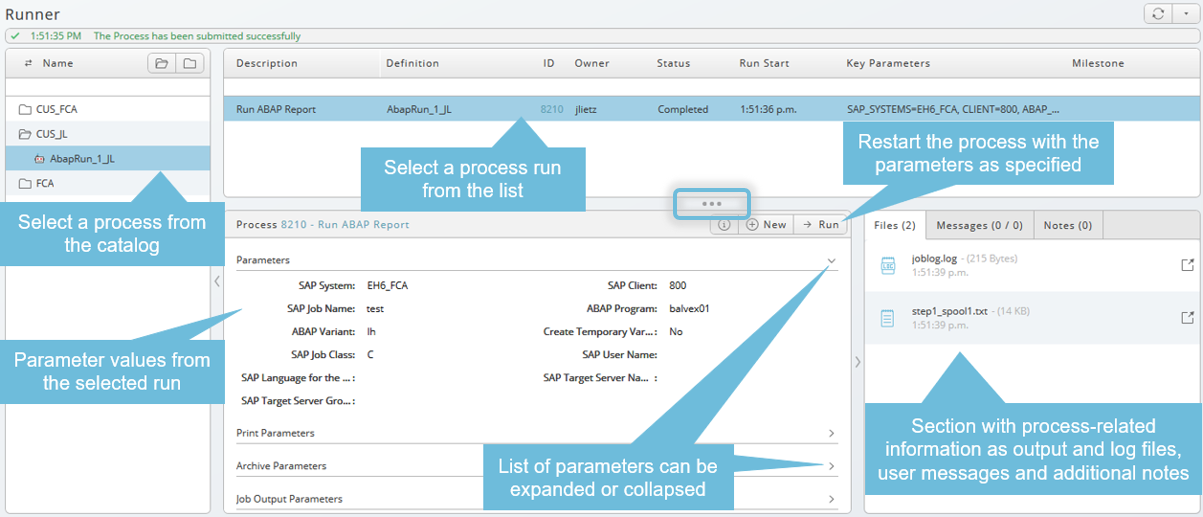
Selections are highlighted blue, and the details in the bottom section are related to the process run selected. Choose the ellipsis (...) on the frame to drag and resize the sections as needed.
Enabling processes for the Runner
To enable the process and chain definitions for the process catalog, from the Control Center:
- Select Definitions in the left-hand navigation menu, and then select either Processes or Chains..
- Search for your process or chain definition
- Right-click to open the context-menu and select Edit Runner Visibility from the dropdown.
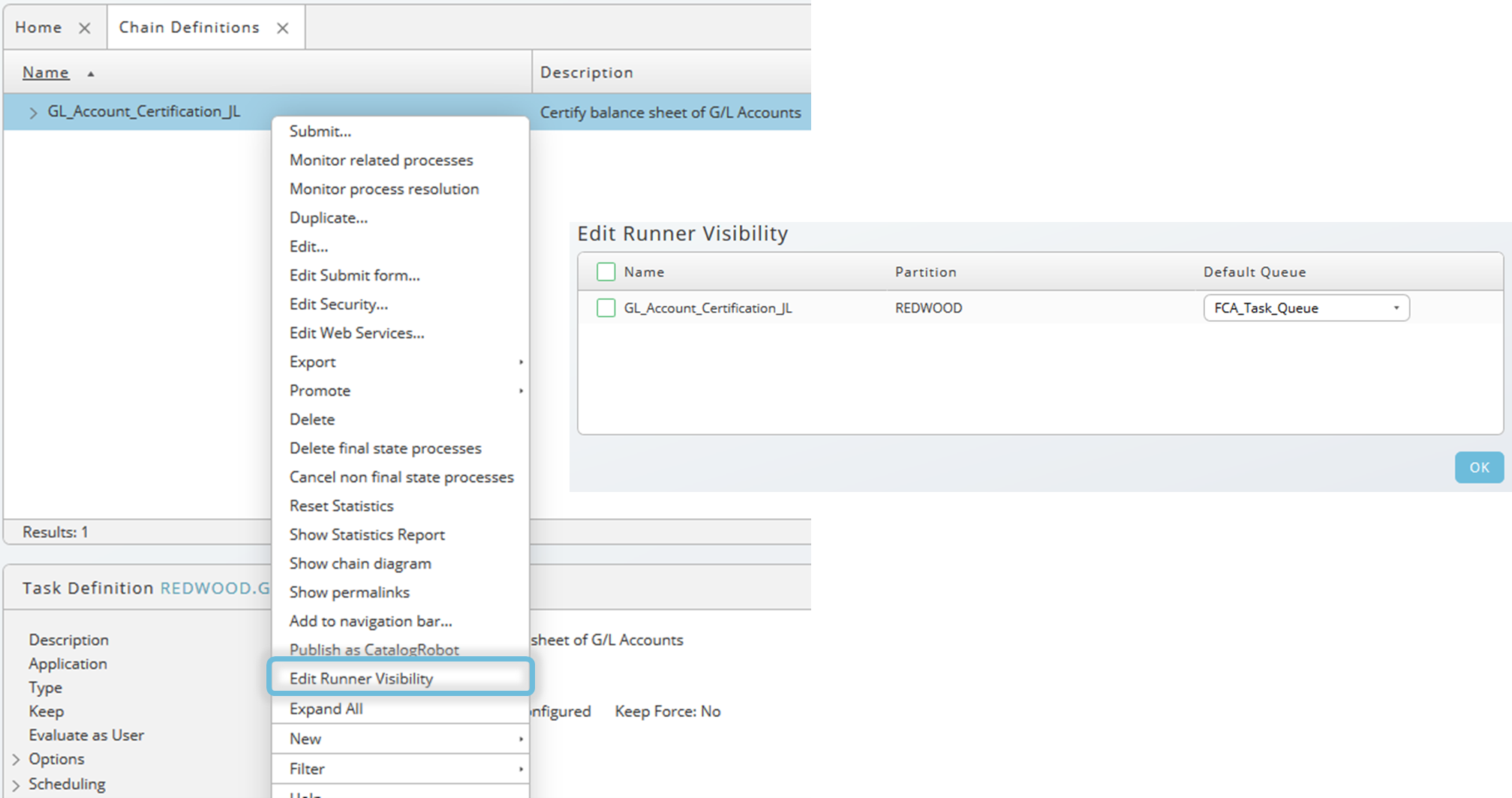
- Checkmark the process definition and click the OK button**.
The process definition is now available in the Runner. It is also possible to select multiple process definitions at once.
When the definition has been started before the runner visibility is activated, all process runs will also appear on the right-hand side.
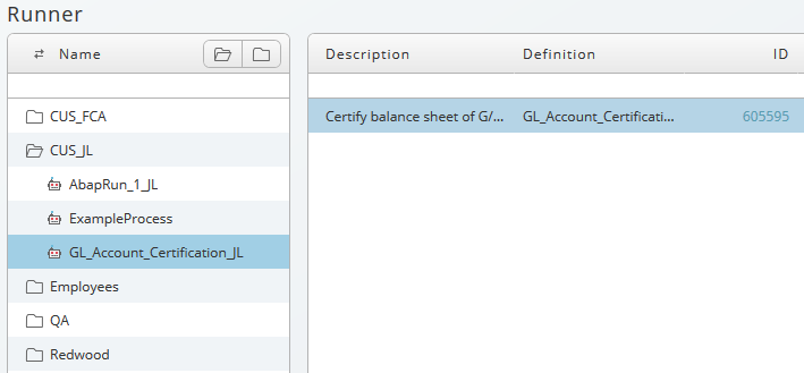
From the Catalog in the left menu, click the button with two arrows to toggle between process Names and Descriptions.

To deactivate the runner visibility go back to the process or chain definition, choose Edit Runner Visibility from the context-menu, and uncheck the check box. The definition will disappear from the Runner after pressing F5 or the next time the Runner is opened.
Using the Runner
The Runner allows users to do the following:
- Select and filter
- Review the details and results
- Run or rerun an automated process or a single process definition
Column Chooser and Filters
To change the column layout of the Runner:
- Right click in the upper section of the Runner.
- Choose Column Chooser from the Context menu dropdown.
- Drag and drop the column names from the Available Columns list to the Display Columns list.
- A blue line indicates where the column will be displayed. Note: The Display Column headers can also be reordered in the Runner using the drag and drop functionality.
Within the Column Chooser there are two sections.
- Display Columns: The columns already displayed in the Inbox
- Available Columns: The available columns, or those which are removed from the view
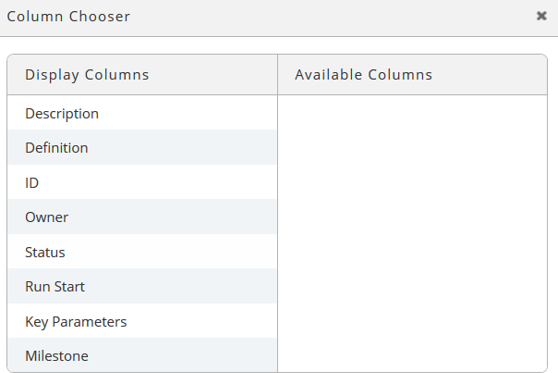
Filters can be added in the empty line between the column titles and the list of process runs. The type of filter depends on the type of column, for example, adding a filter on the Definition column would require entering a string of characters.
The catalog can also be filtered. It looks for matching names or descriptions depending on the settings. The list will be limited from the first significant hit on.

Using the filter to search for dates will populate a calendar. Absolute accepts a specific date, Relative will accept a range.
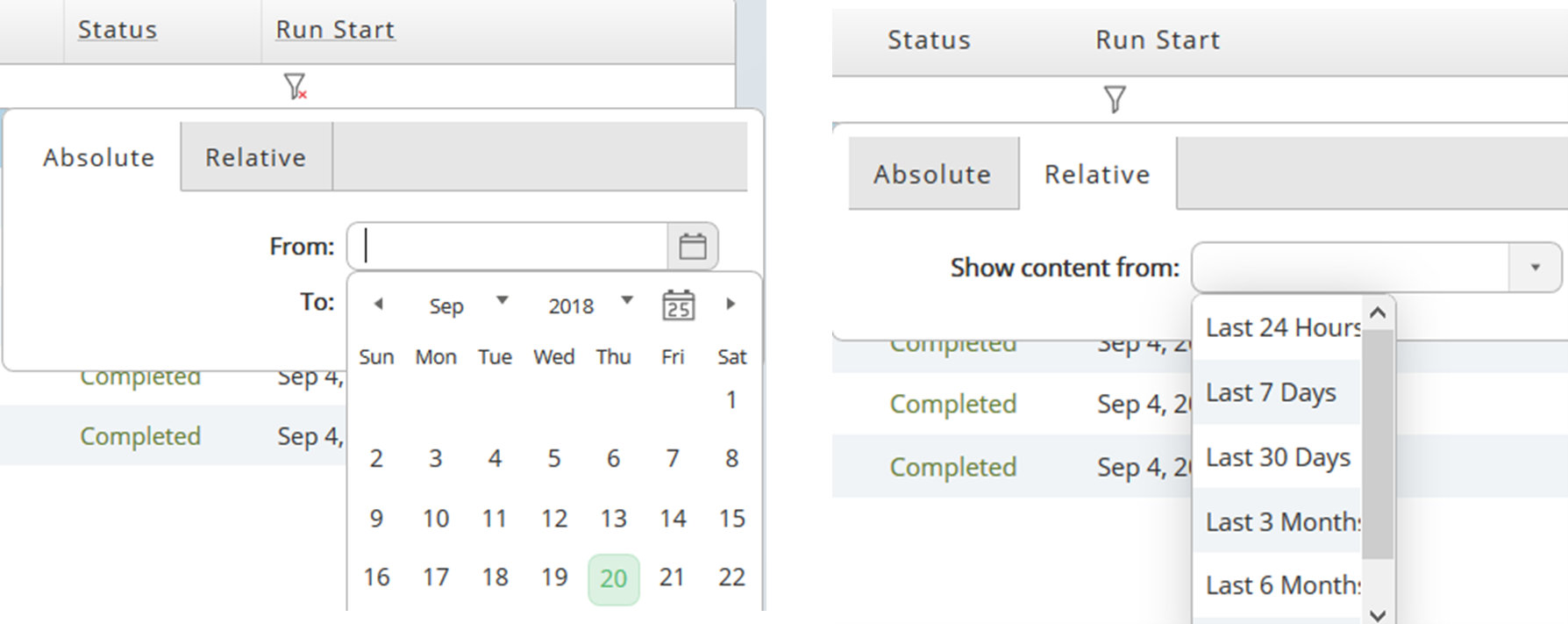
When filtering a column that requires a range of numbers, a slider bar will appear.

It is also possible to combine different filters, for example, every process with "example" in its name that has been executed within the last 30 days. The information entered into the filter will be displayed next to the filter icon underneath the column header.

Use the Delete Filter icon (filter icon with a red cross) to delete filter settings. The delete icon appears automatically when you click on the filter.
Run a Process
When a new process definition is available from the catalog
- Select the process definition and click New to edit the parameters.
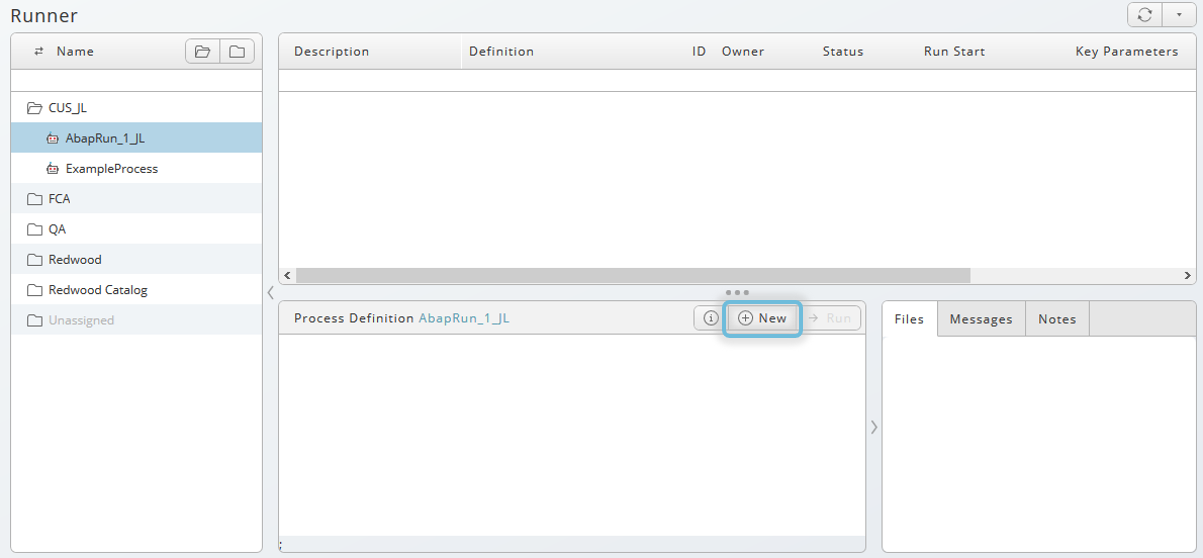
- A red line on the left side of the parameter field indicates a mandatory parameter. All mandatory parameters must be filled before a process can run.
- A default queue must be set on the process definition before a process can run.
- If mandatory fields have not been set, a tooltip appears when you hover over the Run button.
- When all of the required fields have been filled out, click the Run button.
- Note: The Run button will not be accessible until all mandatory fields are filled out.
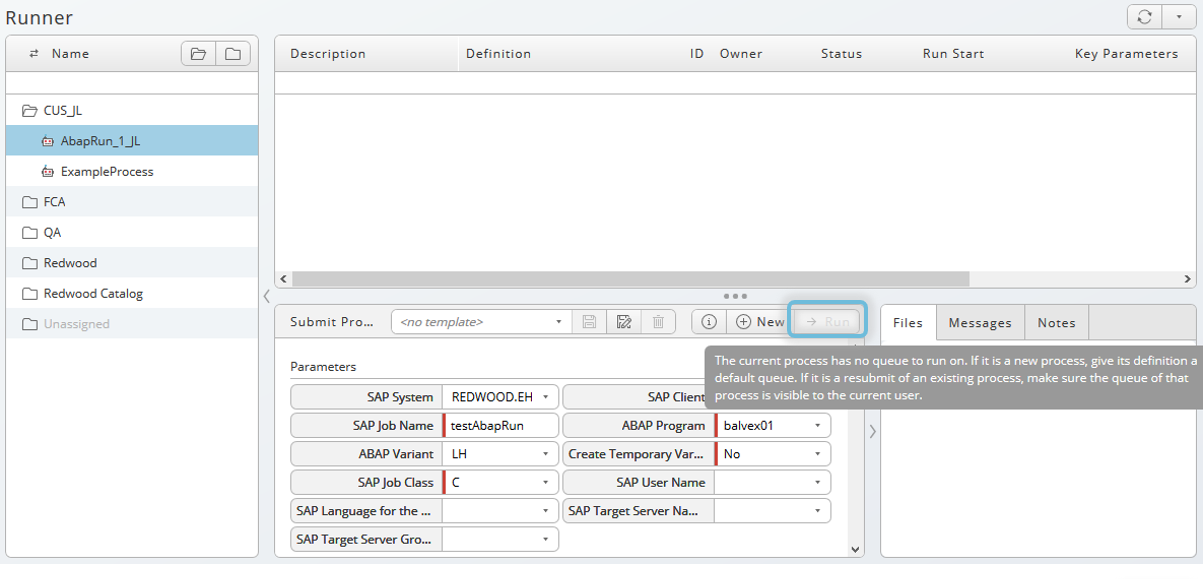
To rerun a process:
- Select one of the processes from the list in the top section.
- Modify parameter values if necessary.
- Choose Run.
Templates
Choose a parameter value, notice the template window. Stored parameter sets give users flexibility to populate many parameters.

The process has completed, a template named `

Saving a new template globally makes it available for all runs of the process definition.
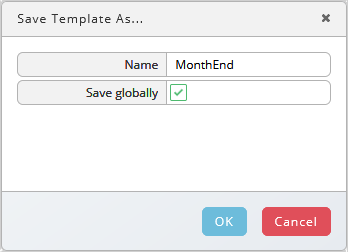
When process definitions are updated, for example, when parameters have been added, removed, or when default values have been set, processes cannot be rerun immediately. Choose *New* before running the process again.

Messages and Notes
When a process contains a workflow, click the link in the Messages tab to jump directly to the Inbox. From the inbox, users can decide whether to abort or to continue the process after reviewing the attached files.

Supplementary notes can be added in the Inbox as well in the Notes tab.
Files
To open process-related files click on the Files tab, then on the icon in front of the file name.
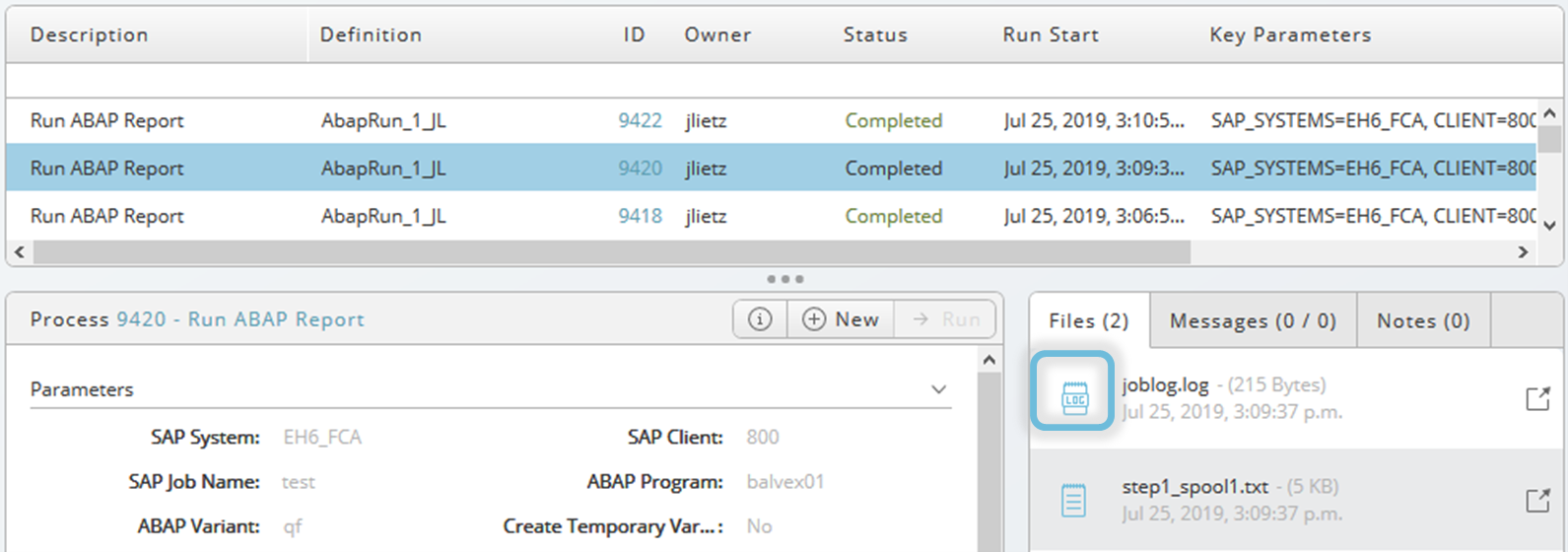

Documentation
The Information button (lowercase i in a circle icon) displays additional information about the process itself. This information is listed within the documentation field of the process definition.
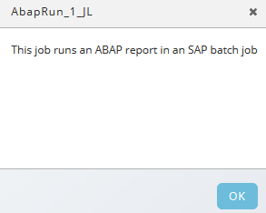
Configure columns of the process list
Two central tables are available to configure the columns of the process list.
- Runner_ColumnParameters
- Runner_ParameterDisplayNames_en
From the Home screen:
- In the left-hand navigation menu, select Scripting.
- Choose on Tables.
- Search for Runner_.
- To add your own entries in these tables, you must first duplicate them and rename them. Select a table.
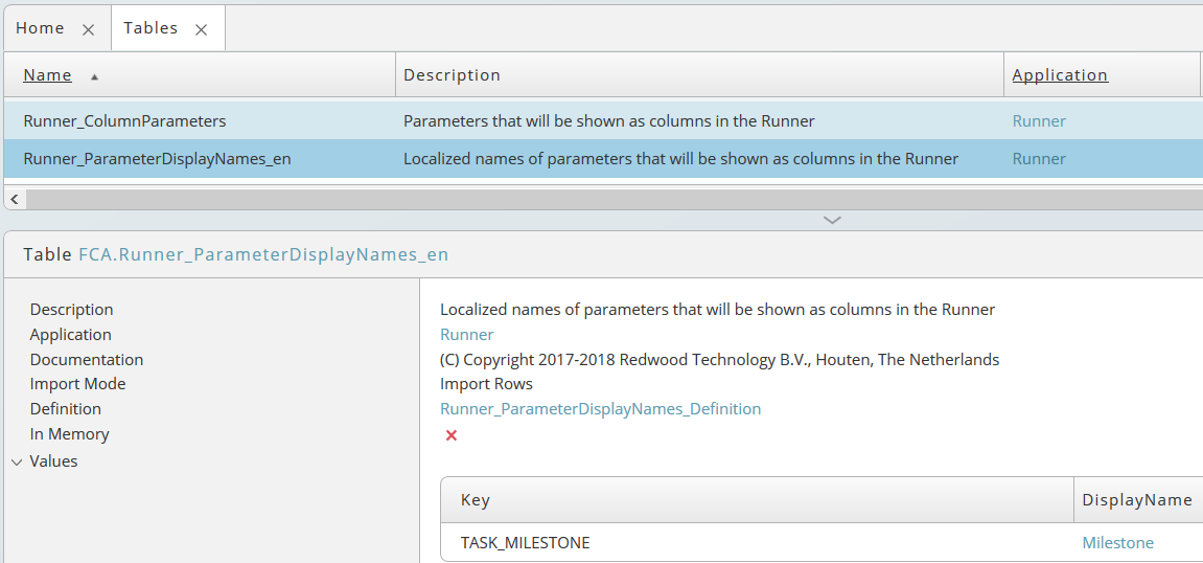
- Choose the Actions button dropdown and select Duplicate.
- In the Edit Table window that pops up, change the Name and the Application fields.
- Rename Runner_ColumnParameters to CUS_Runner_ColumnParameters.
- Rename Runner_ParameterDisplayNames_en to CUS_Runner_ParameterDisplayNames_en
- Change the assigned Application from Runner to your own Application (for example, CUS_myName).
- Choose the Save & Close button.
In the example image below, Company Code and Controlling Area should appear as a separate column in the process list. Determine the appropriate parameters of the process, in the example below, the parameters are BUKRS and KOKRS.

Sometimes parameters can have unusual names. The BUKRS and KOKRS parameters were added as entries in the renamed tables. In the example case above, Company Code was added as the column Display Name instead of BUKRS and Controlling Area was added as the column Display Name instead of KOKRS.

The new display names are shown in the image above.
Parameters
Mode- when set toadminit allows you to disable privilege checks to improve performance, the privilege checks will be performed at a later stage and will veto any process the user cannot submit.
financeTopic
